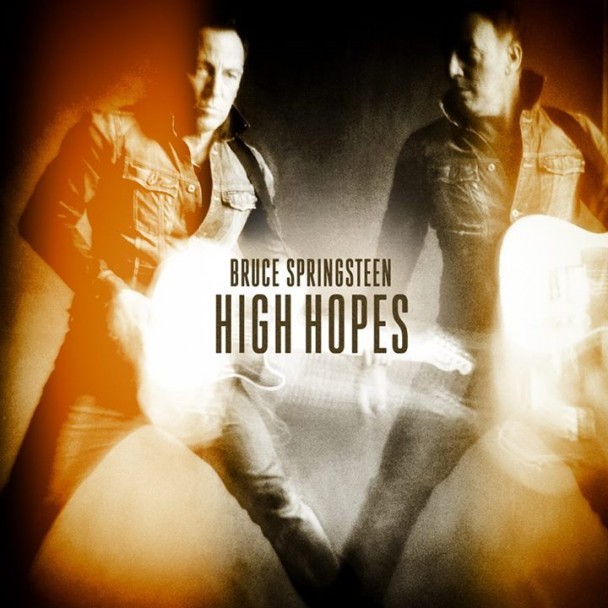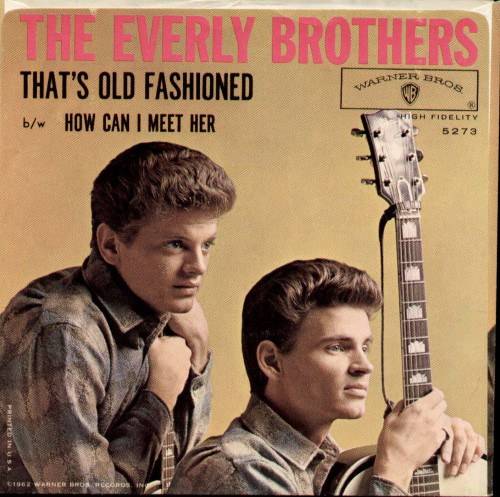
St. Vincent, “Digital Witness,” off upcoming album, St. Vincent, due February 25, 2014.
-– A Days of the Crazy-Wild blog post: sounds, visuals and/or news –

St. Vincent, “Digital Witness,” off upcoming album, St. Vincent, due February 25, 2014.
-– A Days of the Crazy-Wild blog post: sounds, visuals and/or news –

This footage of Nirvana was shot by Dave Markey (“The Year Punk Broke”) on December 30, 1993.
Watch the group perform The Vaselines’ “Jesus,” David Bowie’s “The Man Who Sold The World” and “All Apologies.” The sound is iffy at times.
Dave Markey writes:
20 years ago tonight (December 30, 1993) I stood on Kurt’s side of the stage at my hometown’s Los Angeles Forum and captured the last set I would see of this band. A band that I had worked with, toured with; people that I would call my friends. A band that both the world and myself really loved (can’t really say this has happened since.) Within just a few short months it would sadly all be over. Sharing a few songs here; a couple covers (Vaselines’ “Jesus” & Bowie’s “Man Who Sold The World”) and All Apologies. I’m glad to have documented this show, as well as their pre-fame fun in 1991.
-– A Days of the Crazy-Wild blog post: sounds, visuals and/or news –

Forty-Four years ago, on January 6, 1971, according to Tim Dunn’s “The Bob Dylan Copyright Files 1962-2007,” Bob Dylan’s song “I Shall Be Free #10” was copyrighted.
What’s odd about that is that the song was written and recorded nearly six and a half years earlier. It appeared on Dylan’s fourth album, Another Side Of Bob Dylan, which was released August 8, 1964.
I guess it slipped through the cracks.
Some (Clinton Heylin for one) think this song is a throwaway. I disagree. It provides a good counterpoint to the heavier material on the album, and it contains plenty of great lines.
While it’s a humorous song, it’s also an example of Dylan beginning to move away from traditional, straightforward songwriting.
The more surreal writing of later albums (Bringing It All Back Home, Highway 61 Revisited, Blonde On Blonde, John Wesley Harding) is alive and well in this song.
And it contains at least one classic Dylan line:
“I’m a poet, I know it, hope I don’t blow it.”
According to Clinton Heylin, there were some verses that Dylan chose not to record. Here’s one of them:
now malcolm x is on my trail
robert welch wants to throw me in jail
bishop sheen says i got no belief
rabbi greenbaum says I’m a thief
Below are two outtakes plus the version that’s on Another Side Of Bob Dylan.
“I Shall Be Free” (official version as it appears on Another Side of Bob Dylan), recorded June 9, 1964:
“I Shall Be Free #10” (outtake #2), recorded June 9, 1964:
“I Shall Be Free #10” (outtake), recorded June 9, 1964:
-– A Days of the Crazy-Wild blog post: sounds, visuals and/or news –-

Jeff Tweedy, The Fillmore, Dec. 12, 2013. Cool.
Plus a sing-a-long for “California Stars”:
-– A Days of the Crazy-Wild blog post: sounds, visuals and/or news –

Rosanne Cash’s new album, The River & ZThe Sea, is now streaming at NPR’s “First Listen.”
From the NPR website:
Each song is rooted in the Southern soil connecting the old Cash homestead in Arkansas to the family’s ancestral Virginia homeland, expanding to survey the family’s artistic roots in Alabama and Tennessee. Some narratives are fictional, while others mine family lore. Each unfolds in a subtle arc made three-dimensional by Cash’s introspective lyrics and the genre-dissolving blend of country, soul and torch songs that she and her husband and producer, John Leventhal, cultivate.
Listen to the whole album here.
-– A Days of the Crazy-Wild blog post: sounds, visuals and/or news –

Finally, the new Bruce Springsteen album, High Hopes, is here. If you dig it, buy it January 14, 2014.
High Hopes is out 1/14 via Columbia.
-– A Days of the Crazy-Wild blog post: sounds, visuals and/or news –

A few days ago I did a post about books Dylan has read and appreciated. There was a lot of interest, and I thought readers would be interested in a second post with more Dylan faves.
These books are either featured on Dylan’s website, or he talks about them in his memoir, Chronicles: Volume One.

1 The White Goddess by Robert Graves
Bob Dylan in Chronicles: Invoking the poetic muse was something I didn’t know about yet. Didn’t know enough to start trouble with it, anyway. In a few years’ time I would meet Robert Graves himself in London. We went for a brisk walk around Paddington Square. I wanted to ask him about some of the things in his book, but I couldn’t remember much about it.

2 The Land Where the Blues Began by Alan Lomax
From Publishers Weekly (via Bob Dylan’s website):
Working for the Library of Congress and other cultural institutions, legendary roots-music connoisseur Lomax ( Mister Jelly Roll ) visited the Mississippi Delta with his father, folklorist John Lomax, and black folklorist Zora Neale Hurston in the 1930s; with African American sociologists from Fiske University in the 1940s; and with a PBS film crew in the 1980s, researching the history of the blues in America. Addressing this wonderfully rich vein of scarcely acknowledged Americana, Lomax has written a marvelous appreciation of a region, its people and their music. Burdened early with now long-forgotten technology (500-pound recording machines, etc.) and encountering pronounced racial biases and cultural suspicions about black and white people mixing socially and otherwise, Lomax sought out those in the Delta who knew Robert Johnson and Charlie Patton and others acquainted with musicians once less well known, such as Doc Reese, young McKinley Morganfield (Muddy Waters), Dave Edwards, Eugene Powell and Sam Chatmon. Traveling across the South “from the Brazos bottoms of Texas to the tidewater country of Virginia,” Lomax discovers the plantations, levee camps, prisons and railroad yards where the men and women of the blues came from and the music was born. In a memoir that will take its place as an American classic, Lomax records not just his recollections but the voices of hard-working, frequently hard-drinking, spiritual people that otherwise might have been lost to readers.

3 The Blues Line by Eric Sackheim, editor
From Bob Dylan’s website:
Transcribed from 78 rpm recordings and preserved here long after many of the records have disappeared, this collection of nearly three hundred songs from more than one hundred singers celebrates the diversity of feeling and form that defines the blues. Ma Rainey, Blind Lemon Jefferson, Bessie Smith, Leadbelly, Memphis Minnie, Robert Johnson, and Muddy Waters are represented with their lesser-known contemporaries—Barefoot Bill, Barbecue Bob, Bumble Bee Slim, and Black Ivory King. This complete anthology also features lyrics by Blind Blake, Victoria Spivey, Blind Willie Johnson, “Funny Paper” Smith, Texas Alexander, Lightning Hopkins, Mance Lipscomb, Ma Yancey, King Solomon Hill, Skip James, Arthur “Big Boy” Crudup, Son House, Willie Brown, Mississippi John Hurt, Bukka White, Furry Lewis, Sleepy John Estes, Rev. Gary Davis, Roosevelt Sykes, Peetie Wheatstraw, Sonny Boy Williamson, Kokomo Arnold, Tampa Red, Howlin’Wolf, John Lee Hooker, Charlie Patton, and more than 100 others. Dozens of illustrations by Jonathan Shahn are included.

4 Ringolevio: A Life Played for Keeps by Emmett Grogan
From Bob Dylan’s website:
Ringolevio is a classic American story of self-invention by one of the more mysterious and alluring figures to emerge in the 1960s. Emmett Grogan grew up on New York City’s mean streets, getting hooked on heroin before he was in his teens, kicking the habit and winning a scholarship to a swanky Manhattan private school, pursuing a highly profitable sideline as a Park Avenue burglar, then skipping town to enjoy the dolce vita in Italy. It’s a hard-boiled, sometimes hard-to-believe, wildly entertaining tale that takes a totally unexpected turn when Grogan washes up in sixties San Francisco and becomes a leader of the anarchist group known as the Diggers. The Diggers, devoted to street theater, direct action, and distributing free food, were in the thick of the legendary Summer of Love, and soon Grogan is struggling with the naive narcissism of the hippies, the marketing of revolution as a brand, dogmatic radicals, and false prophets like tripster Timothy Leary. Above all, however, he struggles with himself.
Ringolevio is an enigmatic portrait of a man and his times to set beside Hunter S. Thompson’s stories of fear and loathing, Norman Mailer’s The Armies of the Night, or the recent Chronicles of Bob Dylan, who dedicated his 1978 album Street Legal to the memory of Emmett Grogan.
5 Luck and Leather by Honore de Balzac
6 Le Cousin Pons by Honore de Balzac
Bob Dylan in Chronicles: I liked the French writer Balzac a log… Balzac was pretty funny. His philosophy is plain and simple, says basically that pure materialism is a recipe for madness. The only true knowledge for Balzac seems to be in superstition. Everything is subject to analysis. Horde your energy. That’s the secret of life. You can learn a lot form Mr.B. It’s funny to have him as a companion. He wears a monk’s robe and drinks endless cups of coffee. Too much sleep clogs up his mind. One of his teeth falls out, and he says, “What does this mean?” He questions everything. His clothes catch fire on a candle. He wonders if fire is a good sign. Balzac is hilarious.

7 Kaddish and Other Poems by Allen Ginsberg
From Dylan’s website: Allen Ginsberg’s epic poem inspired by the death in 1956 of his mother Naomi.

Dylan said in 1965: I came out of the wilderness and just naturally fell in with the Beat scene, the bohemian, Be Bop crowd, it was all pretty much connected. It was Jack Kerouac, Ginsberg, Corso, Ferlinghetti … I got in at the tail end of that and it was magic … it had just as big an impact on me as Elvis Presley.

8 On War by Carl Von Clausewitz
From Bob Dylan’s website: Bob Dylan mentions Clausewitz on pages 41 and 45 of his Chronicles: Volume One, saying he had “a morbid fascination with this stuff,” that “Clausewitz in some ways is a prophet” and reading Clausewitz can make you “take your own thoughts a little less seriously.” Dylan says that Vom Kriege was one of the books he looked through among those he found in his friend’s personal library as a young man playing at The Gaslight Cafe in Greenwich Village.

9 Don Juan by Lord Byron
Bob Dylan in Chronicles: I had broken myself of the habit of thinking in short song cycles and began reading longer and longer poems to see if I could remember anything I read about in the beginning. I trained my mind to do this, had cast off gloomy habits and learned to settle myself down. I read all of Lord Byron’s Don Juan, and concentrated fully from start to finish.

10 Honkers and Shouters: The Golden Years of Rhythm and Blues by Arnold Shaw
From Bob Dylan’s website: “The best history of R&B and all its components ever published.”
—John Hammond
-– A Days of the Crazy-Wild blog post: sounds, visuals and/or news –

“Songs of Innocence and Experience” (1984), is a BBC documentary on the Everly Brothers.
Thanks Aquarium Drunkard for hipping me to this!
-– A Days of the Crazy-Wild blog post: sounds, visuals and/or news –-